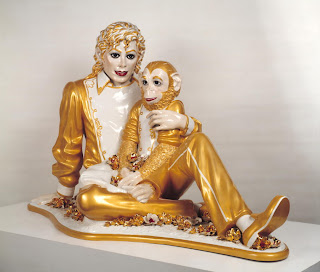With aid of the text 'Thinking with Type' (Lupton, E, 2008) and personal insight, I aim to analyse and review the role and effect of typography applied in a de-constructivist manner, particularly examining the 1989 Cranbrook Academy design poster, by past lecturer, Katherine McCoy (see image below).
Traditonally, typography was used as a basic communicator of literacy- the dictation of spoken word, the informant, or the educator. Pre-print, each hand-written document would contain indivdual features- mishaps and flaws in the writing process- no one book or document being quite the same. However, since the innovation of Gutermann's printing press, the boundaries and applications of typography within documentation have been transformed- not only standardized in form and aesthetics (without the arduous task of hand-writing each piece, but now, by mecanical methods), but also manipulating the way in which we read and interpret the text.
In Walter Ong's 'Orality and Literacy: The Technologizing of the World' (1981), he states:
"...Print situates words in space more relentlessly than writing ever did. Writing moves words from the sound world to the world of visual space, but print locks words into position in this space".
Within a standard printed body of text, there leaves little room for the reader's interpretation or imagination to explore- a left-aligned block of dense text, whereupon the words and content are the lone communicators- little but the anatomy and kerning of the typography- not determining our contemplative state, but, instead, the way in which we read the text- it's legibility, it's readibility. These methods of structuring type are ones that we now take for granted- simple negative space and use of punctuation determing when and where we rest in the sentance- how sound is translated to the listener, and how messages are understood.
However, despite the clear need for structural typography within text for readibility, it was the popularization of de- construction which transformed the written word- no longer used to simply enhance understanding within communication, but to almost deter the reader from..."reading", instead, absorbing, contemplating and considering the true content, message and voice of the text.
French critic and anthropolist Roland Barthes theorised this transformation within printed text- how tyography bought about "the death of the author", whereupon the graphic designer, typographer, and viewer respectively created a visual intepretation of the text with the manipulated layout and structure, not only, as aforementioned, changing or persuading our mindset, but even going as far as to change our emotions and inner thought.
De-Construction introduced the viewer to a whole new concept of reading text- an abstract and bizarre, yet methodically structured form full of imaginative and innovative design.
In my mind, few designers were more effective in their translations of de-contructivist methods that Katherine McCoy, a past lecturer from the Cranbrook Academy (Michigan, US.)- an art and design school that revolutionised typographic structure- exploring the visual methods of print and form.
The design I have chosen from McCoy's portfolio particularly interested me- like many of her other promotional works this piece is intensely visual- bursting with colour and dense combinations of text and image for a vivid and undisptutedly eye-catching design.
In this piece, McCoy uses a traditional base for her structure- a vertically linear text from top-bottom, but with other elements of textual content "exploded" around it- these key words summarising the text within the geometric framing- distinguishing words with reversed-out type and variations in point size (the school name, 'Cranbrook', for example, being slightly larger in the top left-hand corner). The necessary content is there, but in a far more visually engaging style than the methods of printing documents that came before this renovation of design.
I believe, as all inspiring de-contructionist type would, this design is cleverly constructed- in some places clear and concise, in others, almost illegible- making you almost struggle to read- but that was it's exact purpose. This challenge would make you urge you to persue- to explore further, and, once you had, it would go on to challenge your mind, to consider and contemplate it's form and structure- to truly "read", and not simply to "look".



















